Storm Chase, parties, cult films: 25 years of Big Sexy Pictures - an interview with Jobst von Paepcke and Florian Gebbert
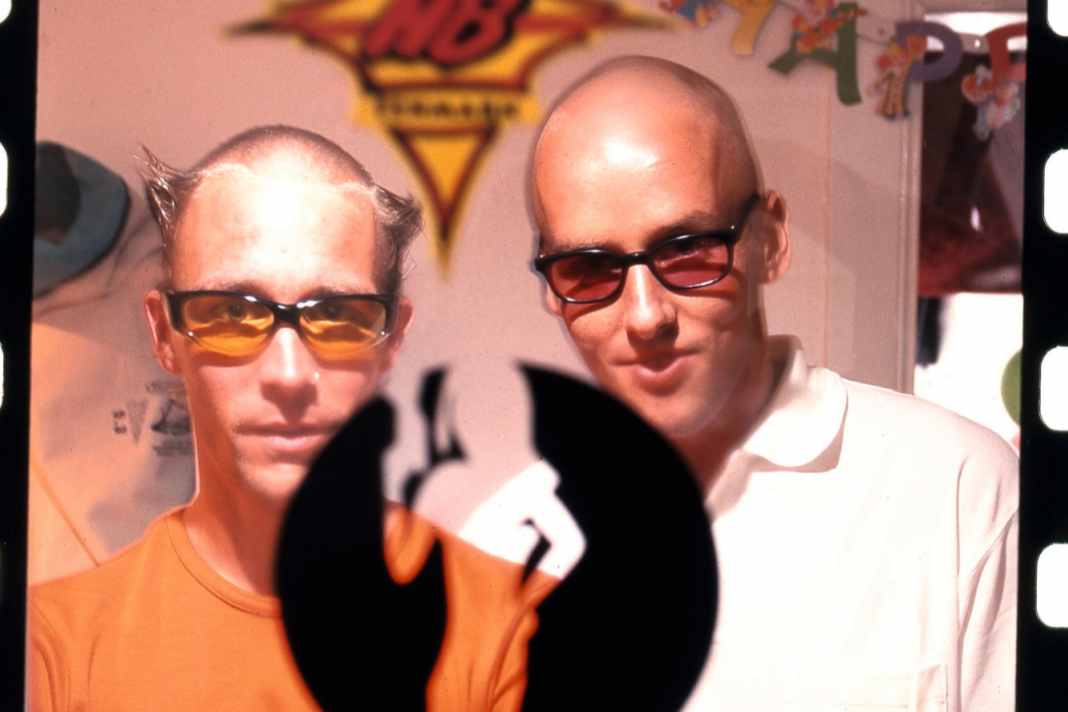





Big Sexy Pictures first saw the light of day almost a quarter of a century ago when two civilians started filming private surf clips. Today, it has grown into a modern media company with almost 20 employees. But the road to get there was long and eventful - Flo and Jobst look back in this interview.
It's been a while since you launched Big Sexy Pictures. Back then, you filmed your own surf trips - films like Speechless or Trinity showed road trips in ripped surf buses, angry North Sea action and sometimes wild flat-sharing parties without a built-in filter. In 2023, you'll be making image clips for Vodafone and Aldi Süd. How much "sexy" is left in Big Sexy Pictures today?
Jobst: Of course, a lot has changed over the years. 25 years ago, we were two young guys who were really only interested in surfing and filming. Today we have families and BSP Media has around 20 employees. We still make productions for brands in the extreme and fun sports sector, for example for Duotone or Red Bull. We also have clients such as Aldi, Ford and Vodafone, which is of course extremely important from an economic point of view. Surprisingly, our expertise in the extreme sports sector is also well received by "normal" companies. I would say that we think quite unconventionally in many areas. If you can organise an event like the Storm Chase, you can also be trusted to make a vegetable supplier from Aldi Süd look good.
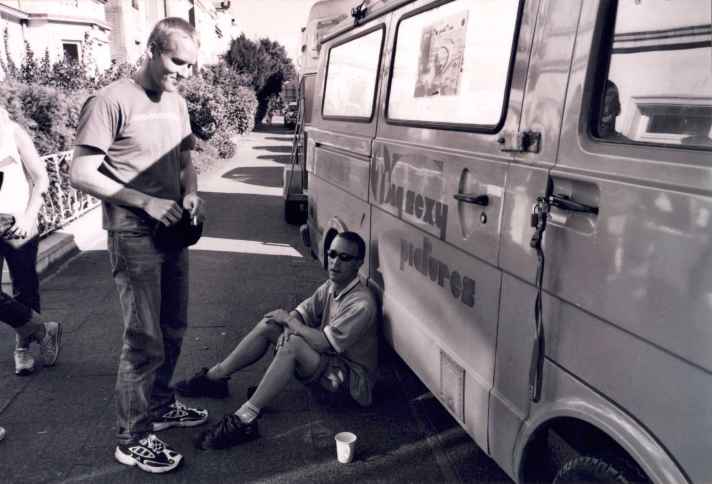
Do you still sometimes long for the wild early days?
Flo: Everything has its time. Of course, we both have fond memories of the early years. We got to know each other on Fehmarn when we were on duty at the hospital there. We surfed together and started shooting our first films. Looking back, I realised that I was mostly filming while Jobst was just surfing, something went wrong (laughs). We snipped the first videos together from video recorder to video recorder.
Jobst: Just so that no false impressions arise. I didn't just surf on Fehmarn, I also worked as a surf instructor and leased a club called "Fach 4". During the day we filmed other windsurfers and in the evening you could watch the footage on a big screen in "Fach 4" during "Early Hour". At that time, hardly anyone had a usable cam, let alone surf footage of themselves. So we regularly had the place full of windsurfers, they could party and were usually all drunk by 10 pm before the real party started (laughs).
Your first commercial surf videos were maximally authentic and showed your own road trip action. Why did people like it so much back then?
Jobst: For the first real film called Speechless, we filmed a trip across the Iberian Peninsula. It was just us surfing and windsurfing, plus the odd local surfer. The first films showed the real surfing life, which in principle everyone could understand. Hawaii and Australia were just as far away for us as the protagonists as they were for the viewers. That worked. When everything was finished, we organised a proper premiere party in a club in Kiel. So our business model was: surfing, filming, organising parties (laughs). We consistently followed this model for subsequent productions such as Backwash, Trinity and Klabauter. Of course, it was good that there was no internet back then, where everyone was overloaded with videos and pictures. People would pay 30 marks for a surf film on VHS cassette. Over time, however, the surfers in our films became a bit more prominent, and Backwash featured young stars like Jonas Ceballos or Dani Bruch and even Björn Dunkerbeck.
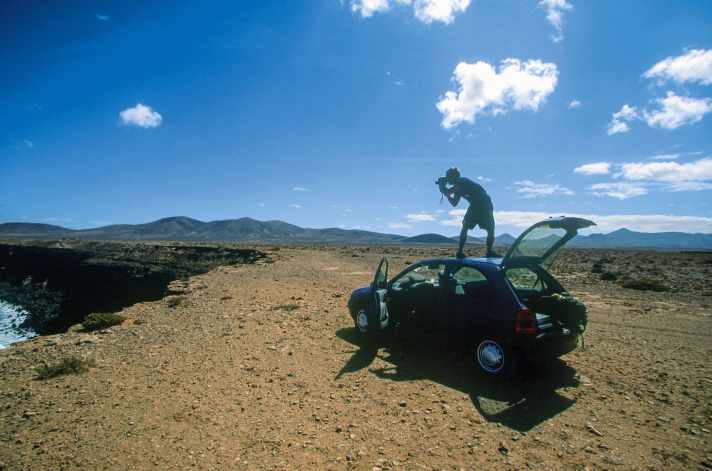
How did two students from Kiel manage to make a film with Dunki back then?
Flo: We filmed on the beach in Pozo and simply approached him - after all, he's not the Lord God. Our Backwash project at the time was to portray the spots and surfers of the Canary Islands. At the time, Dunki had founded his own custom forge called Proof. When he realised that we could take good shots, he signalled his interest in being the title sponsor for the film. We only made a little money from it. We got 1500 marks for the title sponsorship. We slept in Gran Canaria with friends in their living room on camping mats. We lived from hand to mouth, but that was completely okay.
Jobst: Everything was low budget. In Tenerife, we spent the night in the Why Surfboards board factory in an underground car park, in Fuerte in a backyard under the open sky. During our first water shoot with Dunki, his board nose crashed into the plexiglass pane of the water housing and the thing was ruined. We then bought a new disc, which was then sanded down from the moving car on the asphalt until it fitted (laughs). Video production took place at this level back then.
Flo: The advantage back then was that media production was not so commonplace at the time. There was no social media, no GoPros and so on. As a creative filmmaker with proper equipment, you were automatically interesting. And we also had a few good ideas for new perspectives. In fact, we even invented the action cam.
So why aren't you filthy rich now? Forgotten your patent application?
Flo (Laughs): We had a small camera in EVA marine bags, so in a kind of waterproof plastic bag. We taped it to the side of a helmet. On the other side, you needed exactly 500 grams of counterweight, which could be a bottle of apple spritzer or sometimes half a litre of beer (laughs). That worked really well. Klaas Voget often surfed with it. So if someone complains about the weight of a GoPro today, I can only laugh.
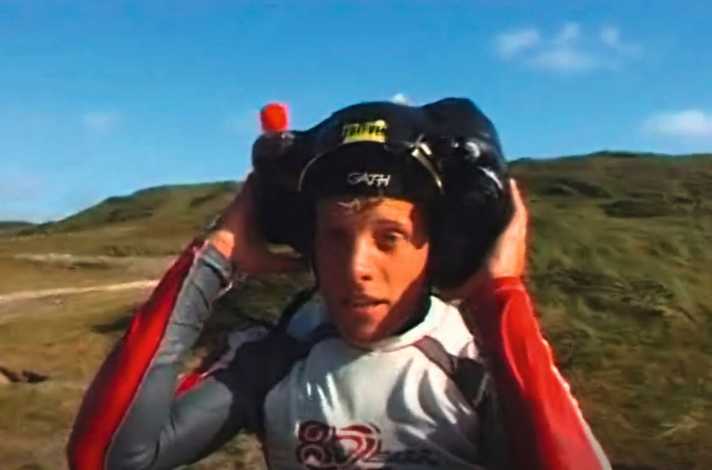
People who surf don't usually like filming. Were surfing and filming not a conflict of interest for you?
Jobst: We always complemented each other. One of us took a land camera, one a water camera. There was usually enough time to go surfing afterwards.
Flo: The dilemma is always there. But it was always a great reward to be able to watch the day's footage in the evening.
Jobst: Weather influences, light, conditions - good moments are never guaranteed in windsurfing. A really good shot was something special back then, even for the protagonists, who were usually riders like Ingo Meyer, Klaas Voget or Matze Bade. At the time, Matze was practically a fixture in our flat share in Kiel's Spichernstraße. After a day on the water, he always came round with a crate of beer, which he sat on and we inspected the equipment. And he only left when the crate was empty (laughs).
There was already a well-known video label in Kiel at the time - Tonix Pictures. Before you got together again years later to form BSP, you both ended up there. Why was that?
Jobst: There was little potential for growth in our "Video & Party" model. Tonix Pictures in Kiel was much bigger, they organised video productions and events and we both wanted to become more professional and learn the trade from the ground up.
Flo: We even dropped out of university for that. Unlike Jobst, I had studied relatively seriously up until then (laughs).
Now that's a tip of the hat to Jobst ...
Flo: Seriously, Jobst used to drive up to the university in his old orange VW LT. An hour later, he rolled back home on his longboard and continued editing surf films (laughs). In the end, it was the classic drop-out career path for us: you had a passion and at some point you realised that you had to follow it instead of taking the easy route. But Tonix was a safe harbour in this respect. It was clear: you don't start at NDR now, but with people with a similar mindset, which meant: when there's wind, everyone goes surfing.
Jobst: At the time, Tonix was looking for new employees because they had the production contract for the fun sports series Stoke, which was broadcast on German sports television (DSF) at the time. The idea for the surf festival was also born during my time at Tonix, and the first festival took place together with you on the green meadow at the campsite at Wulfener Hals.
In the past, you could be quite successful with new surf videos because not everyone could produce them. Today, the internet and social networks are flooded with them. Can you even watch them anymore because the medium of video has become completely arbitrary in the age of TikTok and Instagram?
Flo: I still enjoy following it, also as inspiration for my current projects. There are still people who are very creative these days.
Jobst: Me too, although I realise that it is incredibly rare to find videos with a good "hook". A "hook" can be extraordinarily spectacular conditions, as Thomas Traversa has sometimes found in his video projects. Exciting locations or a real story also work. In this respect, there is a lot of mass today, but not just class. When it became increasingly difficult to earn money selling surf films due to the growing glut online, we came up with the Storm Chase idea. The Storm Chase was the starting signal for a new era at BSP.
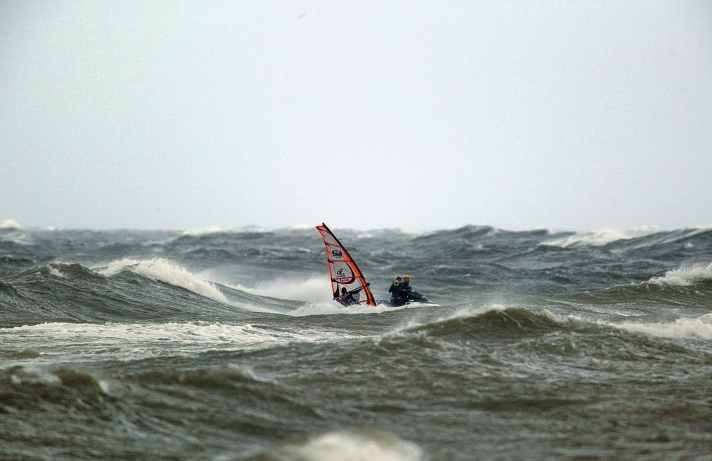
How did you hatch this idea back then?
Jobst: In 2005, we were at a doldrums World Cup on Fuerteventura. It was shocking to see how many people around the world had seen the doldrums images we had produced (laughs). When you live and breathe windsurfing, that kind of thing is a real low blow, so we asked ourselves: how can we bring the fascination of the sport, the battle with the forces of nature, into a project? We wrote the ideas down at home on an A4 page and sent them to three contacts at two in the morning, including Chiemsee and Red Bull. We didn't even know if we had the right email address for Red Bull.
Flo: The next morning the phone rang and it was Red Bull, they actually wanted to meet us. That never really happens. The fact that it happened was the greatest coincidence of all, because an important meeting was taking place at Red Bull that very morning and the manager responsible for the water sports division was still missing a good project in the business plan. He immediately recognised that the idea had potential and met with us.
It has to be said that our original idea was just to document a big storm on the North and Baltic Seas. Red Bull then scaled it up. They asked: "Think bigger and without limits. What do you need to make it really good?" The result was an event in which windsurfers in nine countries surfed the biggest storm of the year at the same time. Coordinating all the film and safety crews including the protagonists in nine countries remotely was a real mammoth project for us.
With storm chasing, there's always a lot of risk that the forecast won't materialise and the whole thing will fall through. How much did you feel when you gave the go-ahead for the first Storm Chase in 2006?
Jobst: We had already cancelled one start at the last second because the forecast was too shaky. So the pressure was pretty intense after that. We knew that we had a chance because there was so much riding on it.
Would Red Bull have thrown you out if you'd messed up?
Flo: I don't believe that. If Red Bull believes in something, then they support it with staying power.
Jobst: The storm came on 31 October 2006. That was the last day which, according to the contract, meant that the film had to be finished before Christmas.
Flo: When the storm was over, Jobst and I locked ourselves in an office for six weeks. Tapes in various formats arrived in the post, a fat box full of video material. Sifting through it all and editing it together for the film was hell. In the end, it was a mix of professional and amateur sport, which was really well received and the film sold really well.
Jobst: The film was shown in the in-flight programme of many airlines and on American sports television. Digital marketing laid the foundation for Big Sexy Pictures GmbH, after which we moved into an office in Altona.
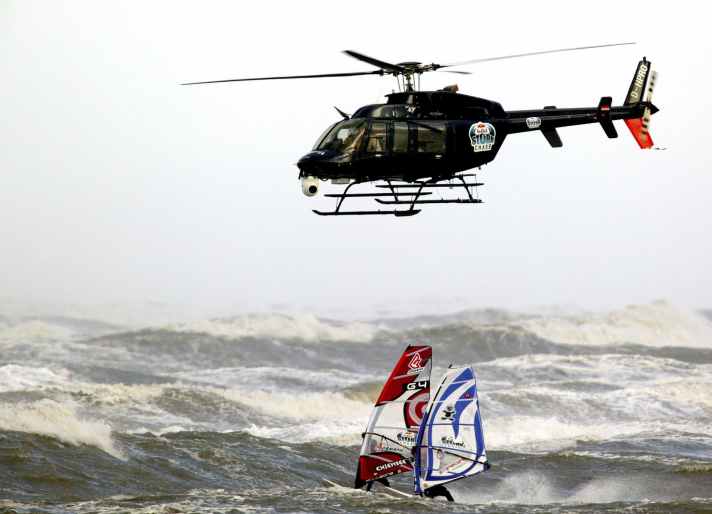
At the first Storm Chase, amateurs and professionals competed and surfed the same storm in nine countries. All subsequent Storm Chase events were purely professional events, where some of the world's best riders braved the storm together in one place. Why did you ditch your original concept?
Jobst: One important reason was the experience from the first Storm Chase. We had a 50-year storm with monster waves on the North Sea, and there were moments when the safety of the riders was no longer really guaranteed because even very good amateurs were obviously pushed to the limit in such extreme conditions.
Flo: In terms of safety, it was borderline, it didn't have an MOT. We wouldn't do it like that today. At a trial event on Rügen, Jobst and I were the camera crew on the safety jet ski, which was a two-stroke that barely made it out through the surf. Meanwhile, one of the two protagonists drifted out of sight and eventually came back up the beach completely exhausted. That's when we realised: we can't do that as organisers (laughs). That was a completely different time and it was almost 20 years ago.
Red Bull is known for pushing extreme formats - critics say that athletes are sometimes pushed beyond the limit and accidents are accepted.
Jobst: The Storm Chase is an extreme format, but I'm convinced that it's safer for the riders than a PWA World Cup. I remember a World Cup in Klitmøller in 2011, with up to eleven force winds from the south-south-west and monstrous waves on the shell reef. I was the entire safety crew on the jet ski, with no back-up. Local Lars Petersen was lost, without lights he drifted off towards Norway almost invisibly. I couldn't see him in the choppy sea because of the spray and the poor lighting conditions. I only discovered him by pure chance after almost an hour, which could have gone really wrong. That's when I realised how important several safety systems are to be able to find surfers quickly in extreme conditions. That's why, in addition to an experienced safety crew, every rider in the Storm Chase has a waistcoat with a flashing light and GPS tracker. And in the end, each rider always decides for themselves whether or not to go out on the day in question.
Did it actually happen that drivers chickened out because of the conditions?
Flo: Yes, there was that. Once the Storm Chase took us to Tasmania. On the first day, we were at a spot where the wind was blowing diagonally onshore at 50 knots. The beach consisted of rocks and boulders the size of medicine balls, with ten-metre waves rolling over the reef outside. It was not very inviting and there were riders who said: No, thanks! And that was fully accepted. None of us would complain: "You're going out there now!" Of course, there's never 100 per cent safety in a competition format like this - but that's the same with any other contest.
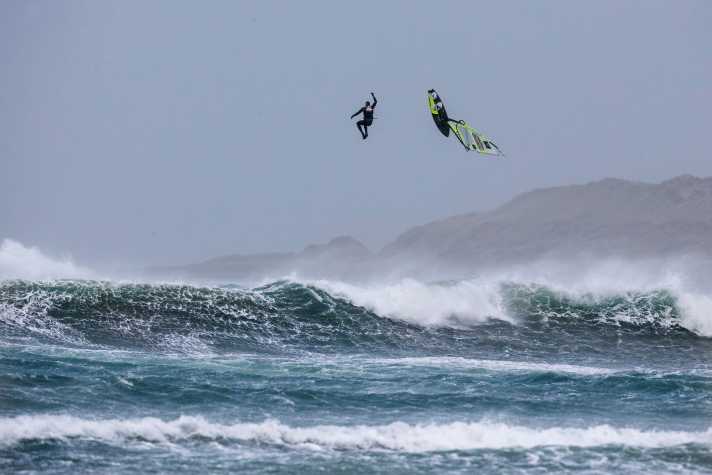
Does Red Bull still believe in the Storm Chase today? Or is the concept off the table for now?
Flo: The pandemic and Brexit have slowed us down. Mercedes, another partner, dropped out at some point. For three years, they had given us a fleet of Mercedes cars with bold Storm Chase branding. We then raced around in fancy cars and returned them after the season - without having achieved anything. I can understand why Mercedes no longer wanted to do that in the fourth year (laughs).
Jobst: But Red Bull still believes in it and so the event is only in sleep mode. But we are working on new concepts and the Storm Chase will certainly wake up again at some point. And we as a media company are no longer just dependent on the Storm Chase, but have many other projects that we are working on.
Today you produce advertising clips for Aldi, Vodafone or Ford. That's a stark contrast to formats like Storm Chase.
Flo: I think our experience in the field of extreme sports is helpful for many of our projects today. At events like the Storm Chase, you have to be extremely flexible and reschedule if necessary, and this flexibility still helps us today with everyday projects. We now both have families and a large company, so it's a good feeling that not everything stands or falls with an extreme sporting event like the Storm Chase and a wind forecast. Of course, we also have a responsibility towards our employees and make sure that everyone who works here has a similar mindset. That's why I enjoy coming to work in the morning, even after so long here.
Jobst: Customers such as Vodafone, Aldi and Ford are of course extremely important to us as a company. Nevertheless, we are still active in the fun sports sector: in the event sector, this includes things like Red Bull Cliff Diving, the SUP & WING DM on Fehmarn or Wake Capital, a major wakeboarding event in Hamburg city centre. We have also been active for windsurfing brands such as Duotone for years and produce their product clips. These are projects on Lake Garda, on Maui or in Tahiti that are simply fun and close to the DNA of Big Sexy Pictures. In our sports films, we have learnt to make people shine. But the star can also be a vegetable delivery man who does his job with the same dedication as a windsurfing pro. Anyone can shine.
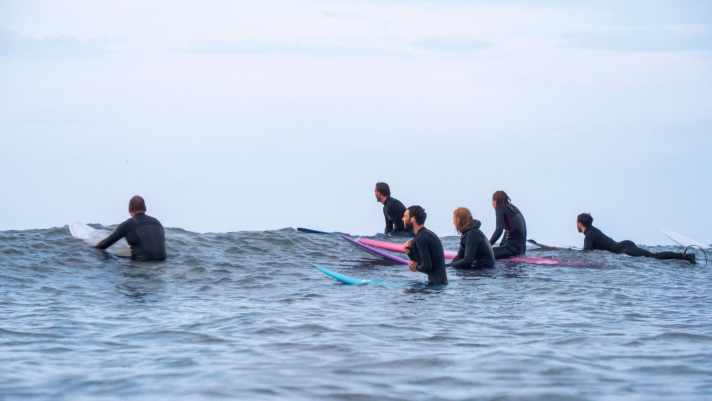
You are also regularly on the lookout for new employees. Do I have to be a windsurfer to start working for you?
Flo: No, not that. But maybe what makes them tick. It happens from time to time that part of the squad quickly scrubs off to Meldorf for a windsurfing session during the week.
Jobst: Many of our team are water sports enthusiasts. That's why we move our office to Klitmøller every year for a while, to our office by the sea. In the past, we have rented holiday homes for this purpose, but at some point we stumbled across an old farm in Klitmøller, which we converted so that it offers the comfort of a nice holiday home, but can also be used as an office. There are workspaces, fibre optic internet and everything you need to be productive. Our plan is to rent the Stormfarms to companies and groups looking for comfort and peace and quiet. The house is ideal for workshops, offsites and retreats - or for relaxing surrounded by beautiful nature on the edge of Klitmøller. But our employees also use Stormfarmen regularly. It's a dream come true for us. Working and surfing in absolute harmony. Hence the call to all future trainees: Come to Big Sexy Pictures!
Flo: But I don't want this to sound like a cheap commercial ...
Jobst: Of course it should (laughs)!

